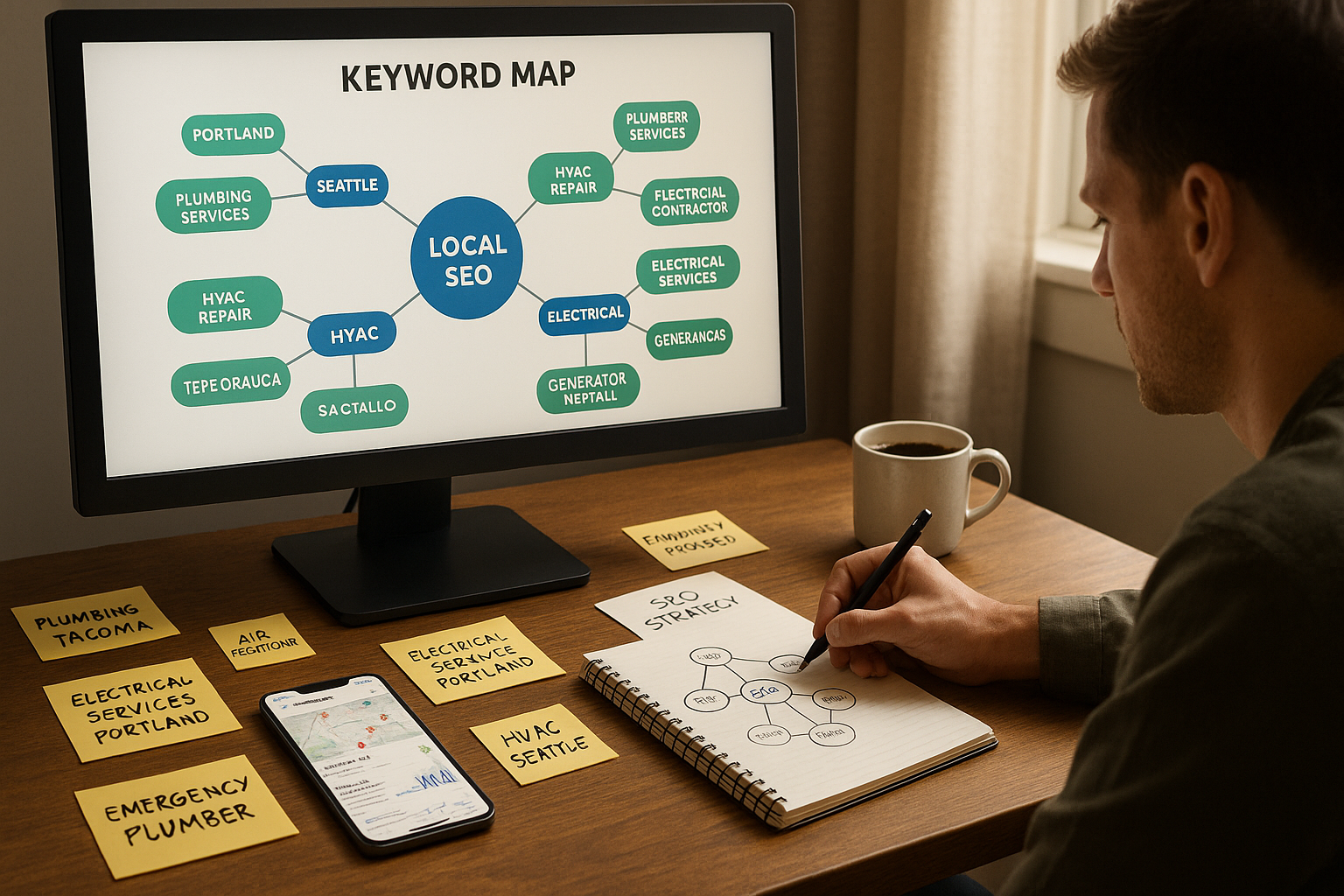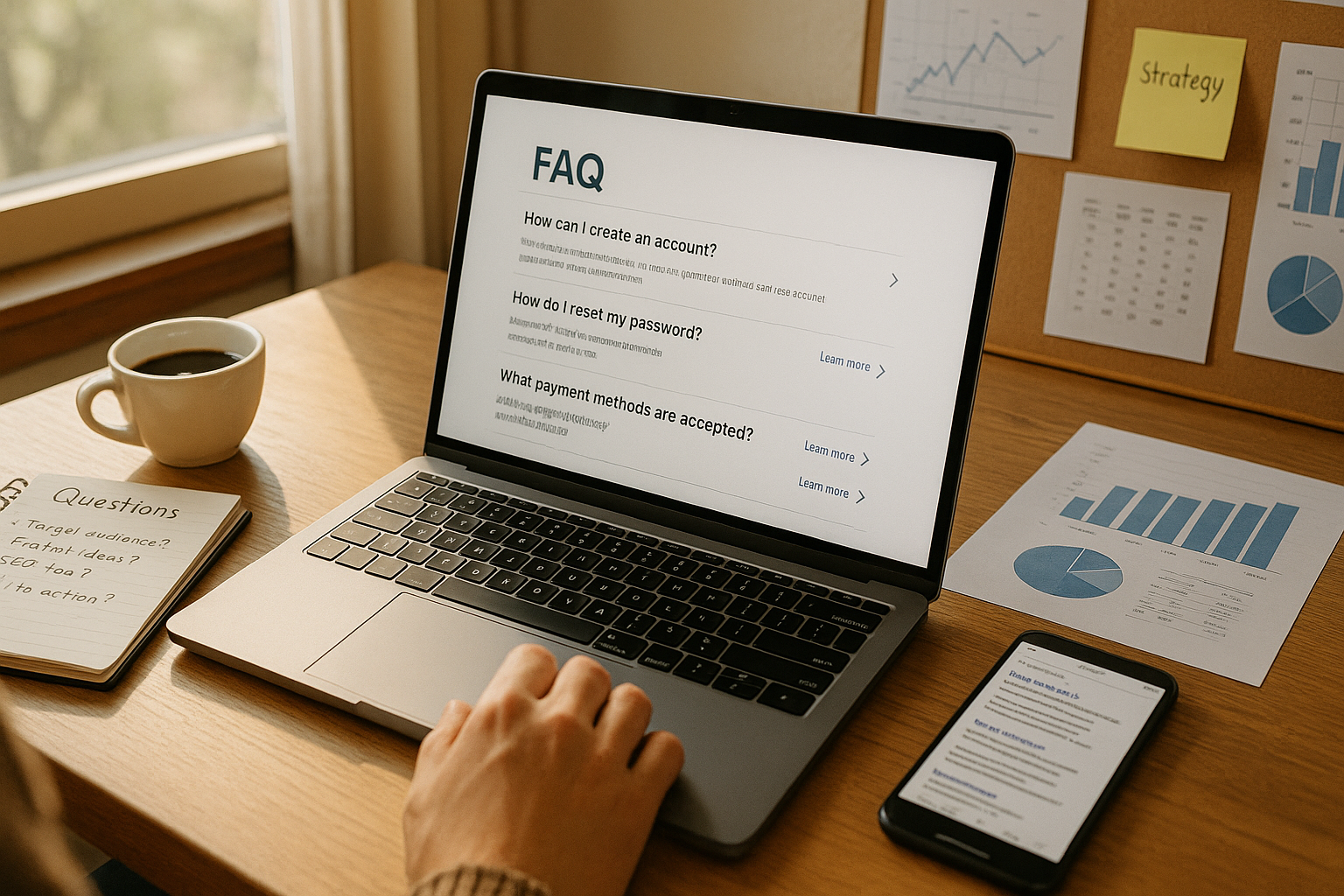Should I DIY SEO or hire a freelancer for my small business?
This is a subtitle for your new post
Search engine optimization (SEO) is no longer a luxury but a necessity for small businesses wanting to be competitive in today’s digital landscape. Whether running a brand-new business or seeking growth for an established company, getting found by customers through Google and other search engines is critical. However, many small business owners face a tough decision: tackle SEO themselves (“DIY SEO”) or bring in outside help, often in the form of a professional freelancer. Both paths promise growth, but each comes with distinct advantages and challenges.
This comprehensive guide will explore what it truly takes to succeed with DIY SEO, weigh the pros and cons of hiring a freelancer, and give you the information needed to make the smartest decision for your business.
The Basics: What Is SEO and Why Does It Matter?
SEO, or Search Engine Optimization, is the process of improving your website’s visibility on Google and other search engines. When someone searches for services or products you offer, you want your website to appear at the top of those results. The higher your ranking, the more likely customers will visit your site, call you, or walk through your door.
SEO isn’t just about inserting keywords. It involves:
- Keyword Research: Picking terms your ideal customers actually use.
- Content Creation: Crafting high-quality, relevant web pages and blog posts.
- Technical Optimization: Making sure your website loads fast, is mobile-friendly, and easy to navigate.
- Backlink Building: Earning links from reputable sites to increase your site’s authority.
- Analytics: Measuring performance and adjusting strategies based on data.
For small businesses, good SEO brings organic traffic, increases trust, and unlocks powerful new marketing channels—often with a better long-term return on investment than paid ads.
The DIY SEO Route: What’s Involved?
Embarking on a DIY SEO journey means taking full control of your website’s search performance. At first, this might sound appealing: you save money and learn valuable skills. But before diving in, it’s important to understand the full scope of what DIY SEO entails.
Key Tasks Required
DIY SEO isn’t just a “set and forget” job. You’ll need to:
- Master tools like Google Analytics, Google Search Console, and SEO software.
- Conduct regular keyword and competitor research.
- Write optimized content for your website and blog.
- Fix technical website issues (mobile responsiveness, site speed, broken links).
- Build quality backlinks while avoiding risky “black-hat” techniques.
- Track ongoing performance and adapt to Google algorithm updates.
The Learning Curve
SEO is a complex, ever-changing field. Google regularly updates how it ranks websites, and what worked last year may get you penalized today. DIYers need to constantly stay on top of changes, interpret best practices, and watch out for pitfalls.
Time Commitment
Small business owners are often pressed for time. DIY SEO can take several hours a week—on top of running regular operations. If your schedule is already packed, it’s vital to weigh whether you can consistently dedicate the time SEO demands.
Pros and Cons of DIY SEO
Pros
- Cost Savings: The most obvious appeal is financial. You won’t pay agency or freelancer fees—just the cost of tools, plugins, or occasional trainings.
- Full Control: Implement exactly what you want on your timeline, without waiting for outside help.
- Personal Insight: Learning SEO helps you deeply understand your business and customers, and you’ll have intimate knowledge of your website setup.
- Immediate Action: Make real-time changes whenever you spot something that needs improvement, without waiting for approval from a third party.
Cons
- Steep Learning Curve: Expect to spend a lot of time learning, testing, and implementing SEO strategies—often with trial and error.
- Risk of Mistakes: Inexperience can lead to costly errors, ranging from poor content optimization to accidentally using tactics that trigger Google penalties.
- Time Intensive: SEO success requires ongoing effort, which can distract from critical business operations.
- Results Can Be Unpredictable: Without expert oversight, it may take months (or longer) to see measurable improvements.
Pros and Cons of Hiring a Freelancer
Pros
- Expertise: Freelancers specialize in SEO. They have the experience to avoid rookie mistakes and maximize your ROI.
- Efficiency: With up-to-date skills, they can achieve results more quickly and efficiently than most business owners can on their own.
- Scalable Services: Freelancers can help as much or as little as you need—from a one-time website audit to ongoing optimization and reporting.
- Better Tools: Pros often have access to premium software for research, auditing, and tracking, yielding deeper insights and more robust strategies.
- Free Up Your Time: With optimization handled, you can focus on serving customers, growing your business, or even just having time off.
Cons
- Cost: Freelancers charge for their time and expertise. Prices can vary dramatically based on experience and project scope, impacting your budget.
- Finding the Right Fit: Not all freelancers are created equal—evaluating skills, checking references, and ensuring they “get” your business takes effort.
- Reliability Risks: There’s always the chance of communication delays or reliability issues if you don’t find a true professional.
Comparing Costs: DIY vs. Freelancer
SEO cost is a key deciding factor for small businesses with limited budgets. DIY SEO is inexpensive upfront—often limited to nominal software or plugin subscriptions. But the real price is your time: hours of research, execution, and ongoing maintenance. If your time is “worth” $50/hour and you spend 10 hours a week on SEO, the hidden costs stack up quickly.
Freelancer rates for small business SEO typically range from $500–$2,500/month, depending on the project’s scope and their level of specialization. Factor in:
- Whether you need a one-off audit or long-term content development.
- The competitiveness of your niche.
- Whether technical fixes or ongoing link-building are required.
While hiring out costs more cash, the value is time saved and potentially faster, more reliable SEO results.
Practical Skills Required for DIY Success
Succeeding with DIY SEO calls for multi-faceted skills:
- Technical Knowledge: Understanding site structure, HTML, schema markup, and fixing errors.
- Content Writing: Ability to craft optimized pages, blogs, and landing pages that both rank and convert.
- Analytical Thinking: Interpreting data from analytics tools, measuring, and iterating.
- Marketing Strategy: Planning how SEO aligns with overall growth goals.
- Adaptability: Staying current with trends and tweaking approaches as algorithms update.
Many new DIYers quickly find gaps in one or more of these areas, slowing down progress or leading to subpar outcomes.
When to DIY: Signs It’s Right for Your Business
DIY SEO makes sense when your business meets several criteria:
- Tight Budgets: You can’t yet afford monthly freelancer or agency fees.
- Flexible Timelines: You don’t need “overnight” results and can afford to experiment.
- Willingness to Learn: You enjoy research, troubleshooting, and staying curious.
- Low Competition: You serve a narrow niche where basic SEO provides quick wins.
- Simple Websites: Your website is straightforward and doesn’t require technical overhauls.
For startups and solo founders, DIYing at first can help cut costs, boost self-reliance, and provide foundational knowledge before scaling up later.
When to Hire a Freelancer: Clear Signs to Invest
Hiring a freelancer is the smarter play when:
- Time Is Scarce: You can’t consistently devote hours every week to SEO tasks.
- Your Market Is Competitive: To rise in crowded spaces, you need advanced strategies and fast execution.
- Need for Rapid Results: If your business depends on monthly lead volume, you can’t risk “trial and error.”
- Technical or Complex Site: E-commerce stores, multi-location businesses, or custom websites need pro-level optimization.
- Previous Efforts Didn’t Work: If your site isn’t growing despite your best efforts, outside expertise is crucial.
Common Pitfalls in Both Approaches
Both paths can run into issues if not approached strategically.
DIY Pitfalls
- Following outdated advice or “shortcuts” that get you penalized.
- Burnout from juggling SEO with everyday business tasks.
- Underestimating the complexities of SEO, especially as your business scales.
Freelancer Pitfalls
- Not clearly defining goals or deliverables, leading to misaligned expectations.
- Choosing based solely on price rather than proven results.
- Lack of communication or reporting from the freelancer.
The antidote: clear goals, honest self-assessment, and strong tracking of progress, whether you’re DIYing or working with a pro.
Finding the Right Freelancer: A Step-by-Step Approach
To maximize value and avoid risks when hiring an SEO freelancer:
- Define Your Goals: List what you want to achieve—higher rankings, more calls, increased e-commerce sales, etc..
- Research: Check portfolios, reviews, and ask for case studies in your industry.
- Interview Carefully: Discuss experience, approach to problem-solving, and communication practices.
- Start with a Small Project: Many businesses begin with a one-time audit or a 3-month pilot to assess fit before committing long-term.
- Request Clear Reporting: Regular updates about rankings, traffic, and actions taken should be part of any agreement.
A successful partnership is built on communication, transparency, and proven expertise—not just low prices.
The “Blended” Approach: When DIY and Freelancers Combine
Some small businesses outgrow DIY but don’t want to fully outsource yet. The solution? A blended model:
- Continue handling basic tasks (content updates, GBP posts) yourself.
- Hire a freelancer for audits, technical fixes, or advanced strategies.
- Use recurring “check-ins” with a pro to troubleshoot and keep improving.
This method keeps costs down while ensuring expert support where it matters most, especially as your business and website become more complex.
GetPhound’s Perspective: Combining Affordability, Flexibility, and Results
GetPhound’s philosophy centers on affordable, high-impact SEO strategies—with no contracts or hidden costs. Services like RankGuarantee™ give you peace of mind by charging only when you see real, first-page results for 100+ keywords. Small business plans offer mass landing pages, content marketing, GBP optimization, and regular reporting so you always know what’s working.
For those considering a “DIY plus” approach, GetPhound’s team can fill skill gaps with tasks like schema markup, advanced analytics tracking, or specialized generative SEO for AI-driven search engines—ensuring long-term growth and visibility.
Conclusion
DIY SEO and hiring a freelancer both offer viable paths to small business growth—but the “right” choice hinges on your budget, goals, technical comfort, and timeline for results. DIY can be cost-effective and empowering for businesses with time and willingness to learn. Hiring a freelancer gives access to greater expertise and efficiency (for a price), and is indispensable in competitive, fast-moving markets.
Don’t feel locked into a single option forever: many thriving businesses start with DIY, then scale up by bringing in outside help as they grow. No matter which route you choose, remember that SEO is a marathon—not a sprint—and the smartest investment is in sustained, strategic action over time. If you're ready to accelerate your results with no risks or long-term contracts, explore what GetPhound’s SEO services can do for you today.












